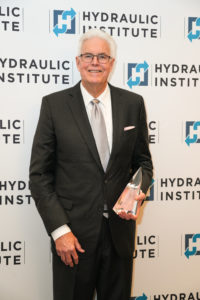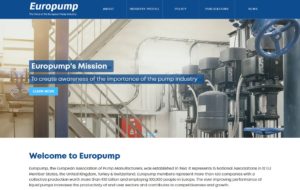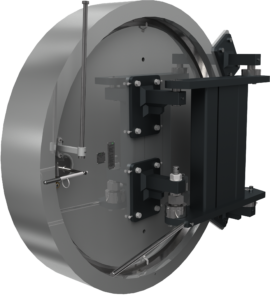Case Story: Pump Sector Can Handle Pressure
The pump sector is used to handling pressure. In the last couple of years, however, pressure has been on the rise. Lawmakers in Europe are pressing hard to improve energy efficiency. End users also have an eye on potential savings. Pump manufacturers thus are under a lot of pressure. A challenge they are glad to face – with good prospects in terms of competitive advantages.
Energy supplier EnBW underscores the importance of energy efficiency for purchasing a pump. “The efficiency of a pump in its field of application is, next to other technical evaluation criteria, an important criterion for new and replacement acquisitions,” emphasises Tanja Rischer, a strategic purchasing agent at EnBW Systeme Infrastruktur Support GmbH. This is hardly surprising, as costs of energy account for 80 percent of life cycle costs for a pump. Purchasing costs, on the other hand, are below ten percent. “The desire to reduce energy consumption of pumps is one of the challenges faced by the industry,” states trade association “Europump”.
Not just a “green” topic
Pump manufacturers and dealers of pumps are feeling the heat. “Energy efficiency is of very high importance,” confirms Thorsten Henck, an R&D team leader at Mankenberg. Seen over the entire service life, “it has a considerable influence on the total costs of a component.” Especially in developed markets, mostly in Europe, the topic energy efficiency plays “a primary role”, underscores Wilo, a company based in Dortmund.
A fact that Christoph Pauly, press spokesman of pump maker KSB can only underscore. “Energy efficiency today is no ‘green’ matter, but a matter of business. Each cent that doesn t have to be spent for electricity or other energy sources improves a company s balance sheet.” Here, a manufacturer of energy efficient pumps already has an advantage.
Efficiency index defines values
Lawmakers are also causing pressure. A central steering instrument is the ErP directive (Energy related Products), also called European Eco design directive. The European Parliament passed it in 2009, since 2013 it prescribes a certain efficiency index for makers of pumps and pump systems.
The Eco design directive established a framework for the setting of ecodesign requirements for energy-related products”. It aims at improving energy efficiency and reduction of environmental pollution. The EU plans to achieve 20 percent better energy efficiency by 2020. Here, pumps offer great saving potential: pumps account of around 25 percent of industrial energy consumption. A global optimisation of all pumps could reduce worldwide power consumption by 4 percent. This would equate to the annual consumption of a billion people in private households, states pump manufacturer Grundfos.
Putting a brake on greenhouse gases
In a first step, circulation pumps installed outside of heating systems are since 2013 only allowed to have a maximum value of 0.27 on the energy efficiency index. From 2015 onwards, the max value will be 0.23. Circulation pumps integrated in heating systems will also be covered by the directive, following August 2015. From 15 August 2015, the Eco design directive will also include pumps in the primary circuit of solar heat plants and heat pumps.
There is no question about it, the European Commission is serious in trying to put a brake on global warming through ambitious goals for reducing the emission of greenhouse gases – with the aim of creating binding efficiency factors for all types of pumps and applications.
Heat pumps serve as an example for saving potential: a new pump technology with electronically commutated motors is already available on the market since 2005. “If this new energy saving technology becomes standard, around 60 percent of annual power consumption of pumps could be saved”, reports the German Energy Agency (dena). This is why the Energy+Pumps Project was launched: the highly-efficient heat pumps were to become a European standard.
Efficient motor and matching design
For users, energy saving potential already begins when buying a pump. It should be optimally designed, i.e. have the right dimensions for the media to be conveyed. This includes the matching, efficient motor, as well as the proper design. If the requirements are known for the pump, it can be given a very precise and economical size, with the help of software.
Determining saving potential for a pump which has been in operation for a couple of years is not all that easy. “The first step is to determine the pump s operating point and its operation mode,” explains KSB press spokesman Pauly. All further energy saving measures depend from the result. After taking a closer look at its operating behaviour it often turns out “that it was not running at the optimal, energy saving operating point”.
Matching speed with requirements
Reasons for deviation can be overdimensioned systems or the “normal process-related, temporary oscillation of flow rate requirements of a system. If power consumption is not matched with demand, valuable energy is destroyed,” adds Pauly. Changing the pump speed could bring a pump s power consumption closer to the demand of a system. “Depending on the load profile, closed circuits allow up to 60 percent of energy to be saved”. The industry offers numerous technological possibilities to influence energy consumption through controlling the pump speed. Pauly: “Savings are the greatest if pumps are operated in partial load”.
Lossful motors
From Grundfos point of view, the hydraulics of modern pumps is basically “exhausted”. At most, precise trimming of the impeller to the operating point is of interest, states Dirk Schmitz, head of communications & PR. “The most important way to optimise pumps is the drive”. Most pumps continuously operate at the highest speed, independent of actual requirements. Taking a look at load profiles makes it obvious: most pumps need only run at their highest speed for a merely a fraction of time. The motor is chiefly to blame for excessive losses, in stator development, in stator and rotor blades through eddy currents and hysteresis, through current flow in rotor axles and closing rings, as well as friction in bearings.
Nonetheless, the pump is not the only element. Seeing the whole system is becoming increasingly relevant. All components in a system, such as containers, tubes, valves, gauges and pumps need to be optimised, emphasises Dr. Sönke Brodersen, chairman of the professional association Pumps + Systems in German Engineering Federation VDMA (Verband Deutscher Maschinen- und Anlagenbau). Doing so would minimise energy losses and lower costs of operation. Grundfos also adheres to the system approach, just like various other pump manufacturers, states Dirk Schmitz. “It is very important to take a look at the entire plant environment. Technically we achieve a high level of energy efficiency through the use of permanent magnet motors, whose speed can be controlled through a frequency converter”, explains Dirk Schmitz, of Grundfos.
A common goal
End users, manufacturers and law makers – all have a common goal with energy efficient pumps, namely achieving the highest possible degree of cost effectiveness and environmental friendliness. For them, it is obvious: pumps are a key technology.







